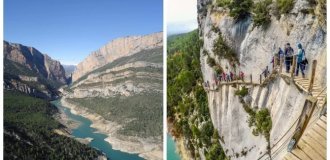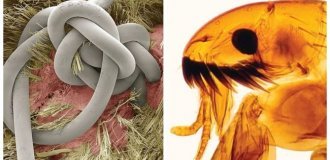Saika: if they die out, the entire Arctic will die out (7 photos)
An inconspicuous fish that supports the entire ecosystem of the North 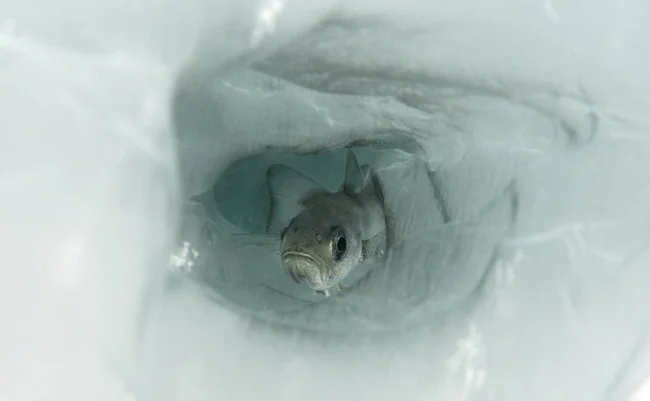
You ask me for help in restoring the ecosystem. But you ask without respect!
This is a gray-brown spotted fish from 25 to 40 cm long. A humped back, a narrow long tail, a protruding jaw - there are few external features about it. But the cod does not need to stand out. In the deathly empty waters of the extreme pole, only schools of cod remind us that there is life under the ice. 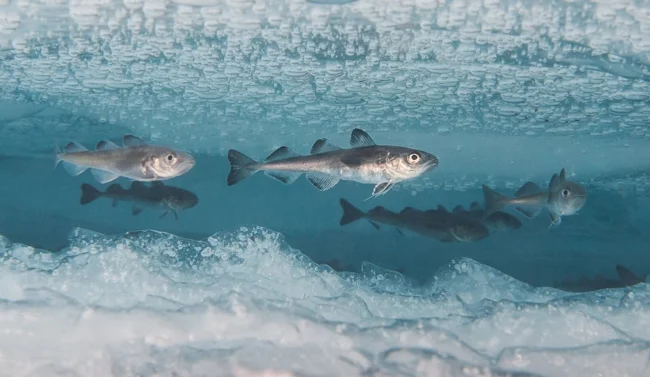
Green freshmen are lost within the walls of the university and are looking for their audience.
Don't get me wrong, there are thousands of species in the Arctic Ocean. But only the Arctic cod swims as close to the pole as any other fish. Cod were found at 85° north latitude. If you've forgotten, let us remind you that the top of the North Pole is 90°. The fish calmly swims right under the ice, where the temperature drops to -2-3°C. A storehouse of microorganisms is hidden here. And all of it is just for the Arctic cod! No other small fish can swim so far to enjoy a buffet of tiny crustaceans, protozoa and mollusks. 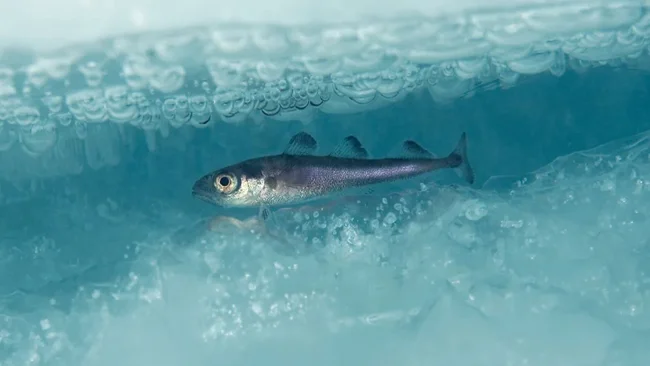
Cola with ice? Crap! Try a purely northern cocktail: fish with ice!
In turn, schools of cod become the basis of the diet for all inhabitants of the polar latitudes: large fish, birds, seals, narwhals, belugas. In storms, the fish are thrown ashore, where they are eagerly eaten by polar bears and arctic foxes. The cod is a necessary intermediate link between plankton and predators: it carries about 70% of the energy for the next steps of the food pyramid. Without it, the circulation of substances at the North Pole simply would not take place! That is why scientists call the cod a key species. Remove the nondescript fish from the ecosystem, and all the established chains will collapse! 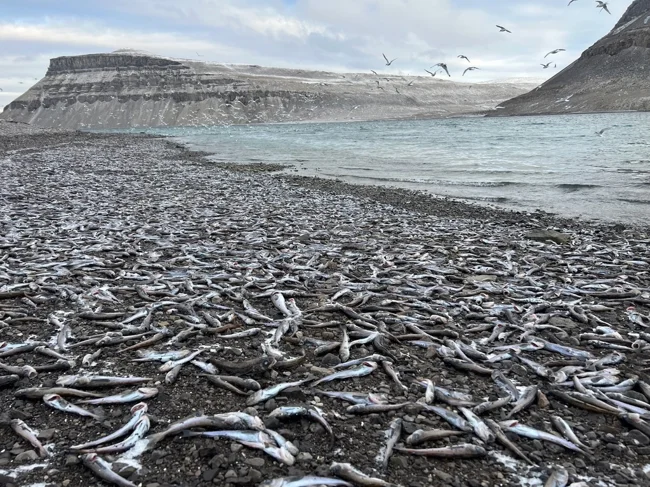
Just imagine what a feast this is for all the inhabitants of the Arctic!
And all thanks to the phenomenal resistance to cold. Scientists compared the molecular composition of the blood plasma of fish from temperate latitudes and polar frostbitten fish, like the cod, for example. It turned out that the blood of northerners contains several times more salt ions than other species. Yes, jokes about the salty ocean and unsalted fish are not entirely true. 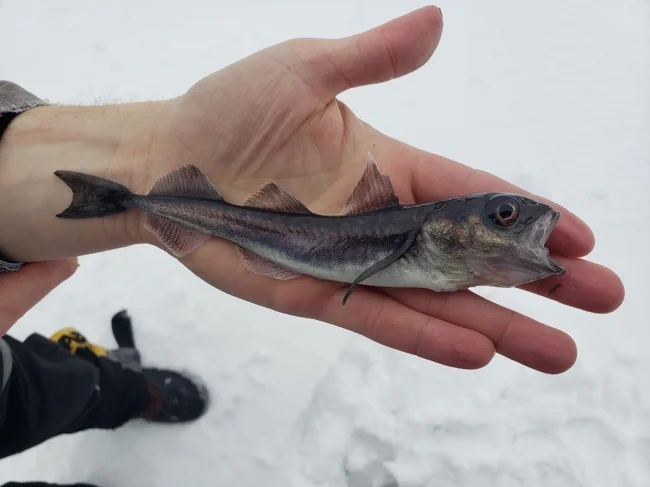
By the way, people almost never catch polar cod. That is why it is quite difficult to find it on store shelves.
But this is only half the success. Glycoproteins were also found in the blood of fish - substances that protect the cell membrane and prevent the formation of ice crystals. For living organisms, it is not the cold itself that is scary, but the ice that forms inside the vessels and in the blood. Water, expanding when freezing, literally tears the cells apart from the inside. Glycoproteins work like antifreeze: they cling to tiny ice floes and inhibit their growth. 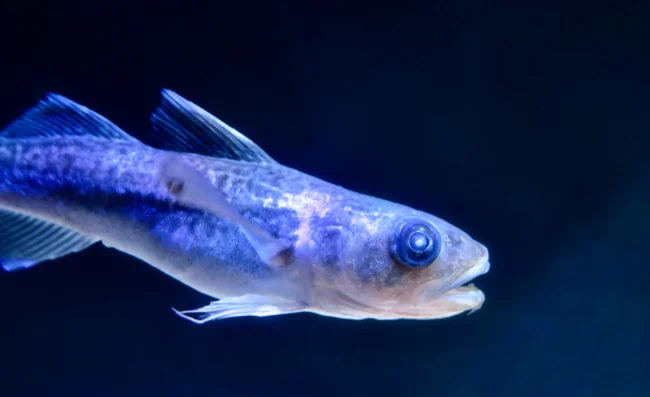
Have you heard of the liquid terminator? They copied me!
For the system to work properly, the concentration of antifreeze proteins and salts in the cod's body must always be high. That is why the kidneys of codfish work "worse" than those of fish in a temperate climate. This makes them ideal polar residents, but at the same time very vulnerable to fluctuations in environmental conditions. Adult fish do not tolerate high temperatures well, and at +14°C they even get heat stroke. But heat has an even worse effect on eggs. Cod spawn in winter, when it is coldest at the North Pole. One female lays up to 21,000 eggs. At temperatures from -2 to +1.5°C, the young feel great. But at only +3°C, the fry show various developmental defects and the number of frozen embryos increases. 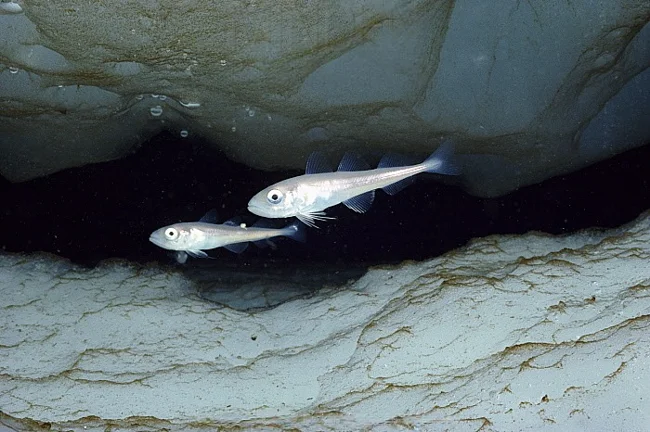
The cod read the news about global warming. And they didn't like it!
As you can imagine, the situation with global warming hits the cod hard. Scientists are well aware of the importance of this species and constantly monitor its condition, but the forecasts are disappointing. Recently, the ocean has been warming: less cold-loving fish are migrating north. Some compete with the Arctic cod for food. Some eat the Arctic cod themselves. In addition, as global warming increases, people will also move towards the pole. This means increased shipping and ocean pollution. Remember the fish's poor excretory system? Unfortunately, they certainly won't survive this. And along with them, all the other inhabitants of the far north won't survive the blow to the pole. Unless, of course, a species can be found to replace the Arctic cod.




